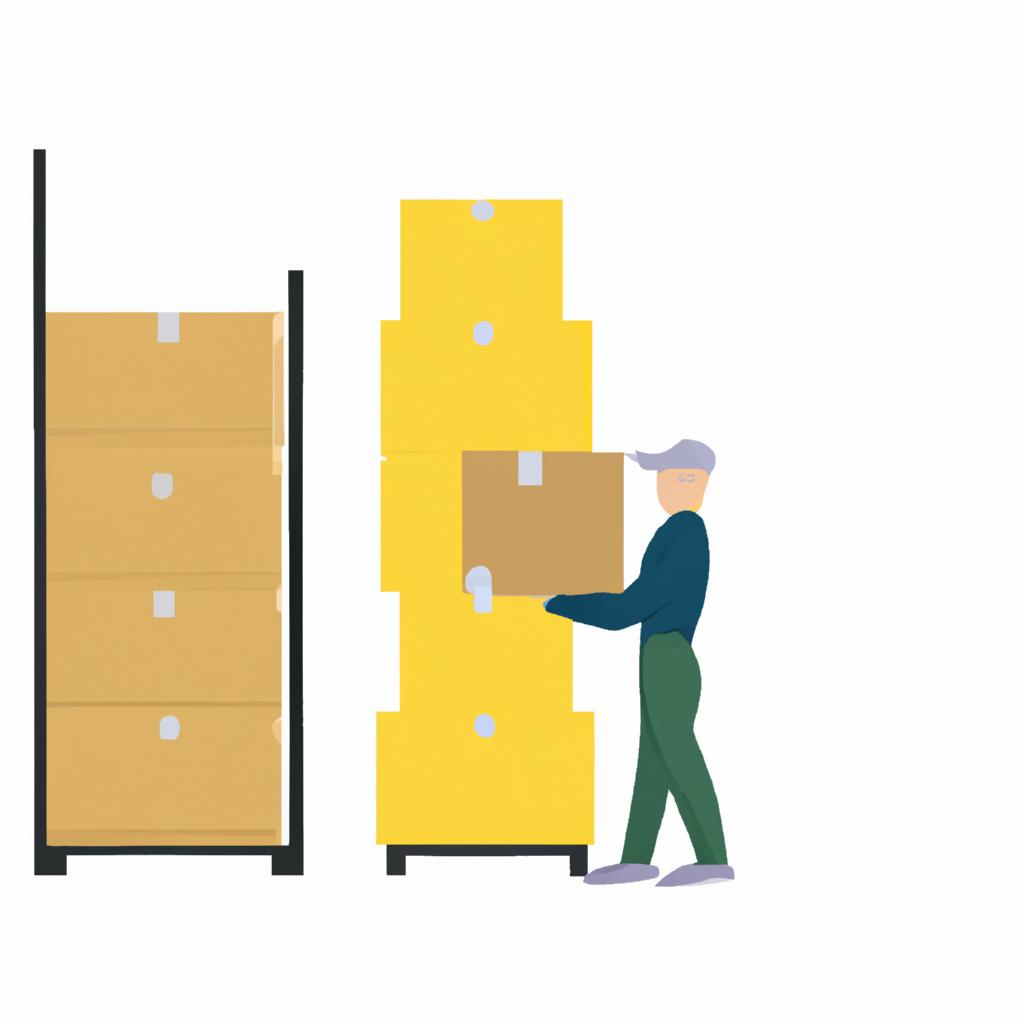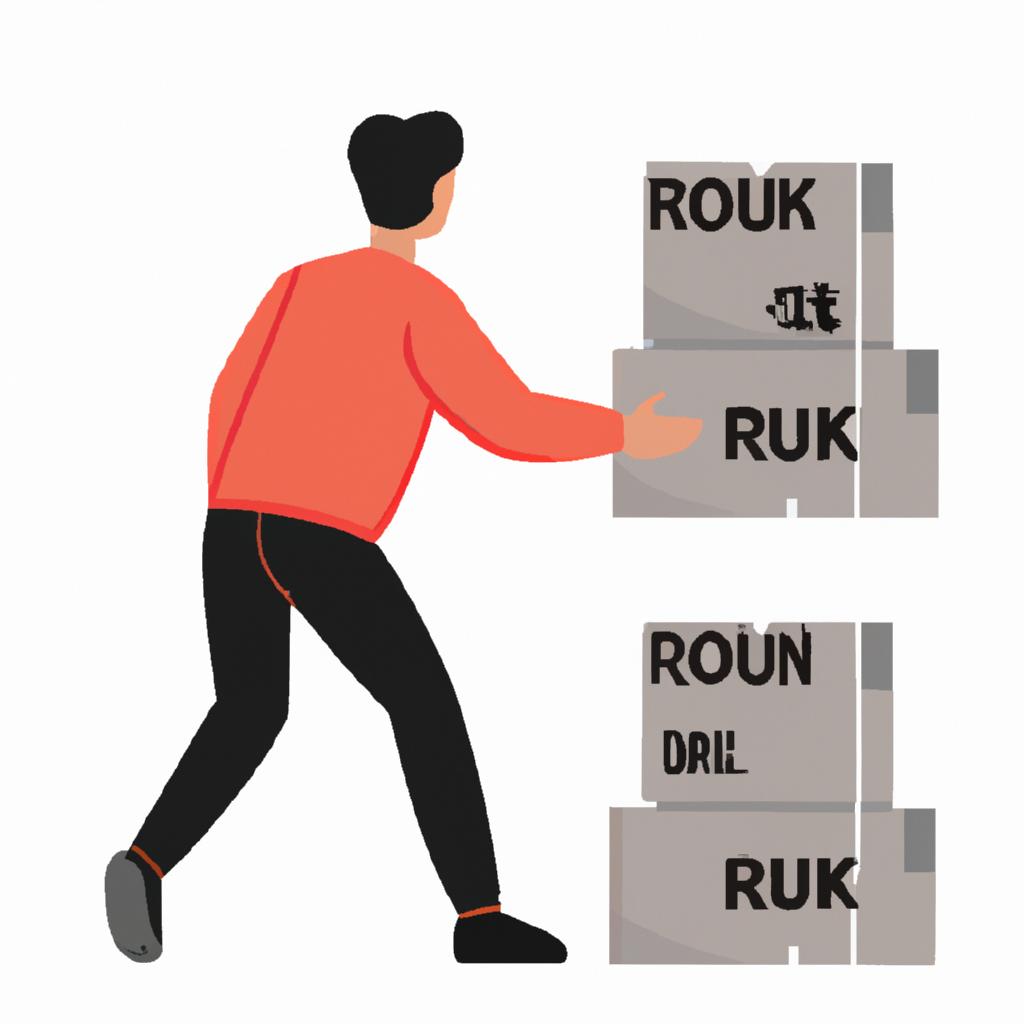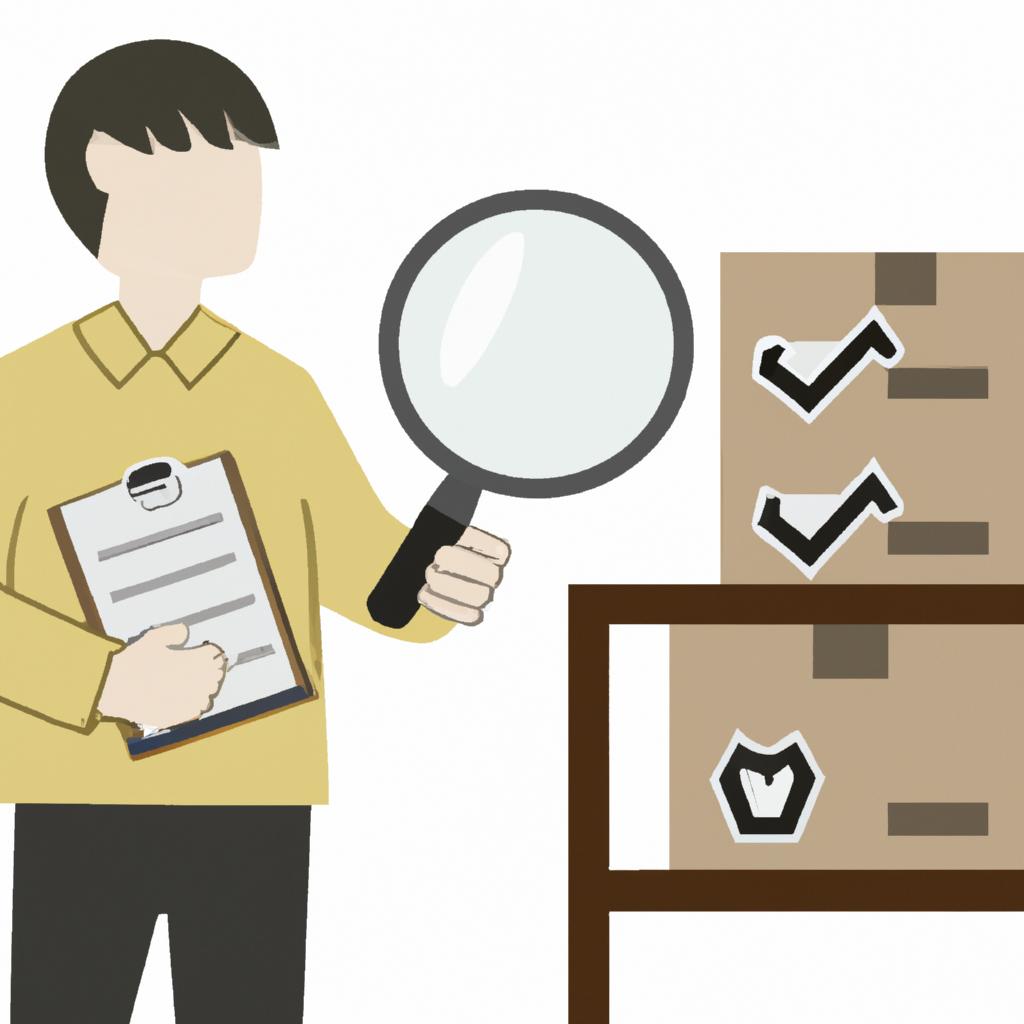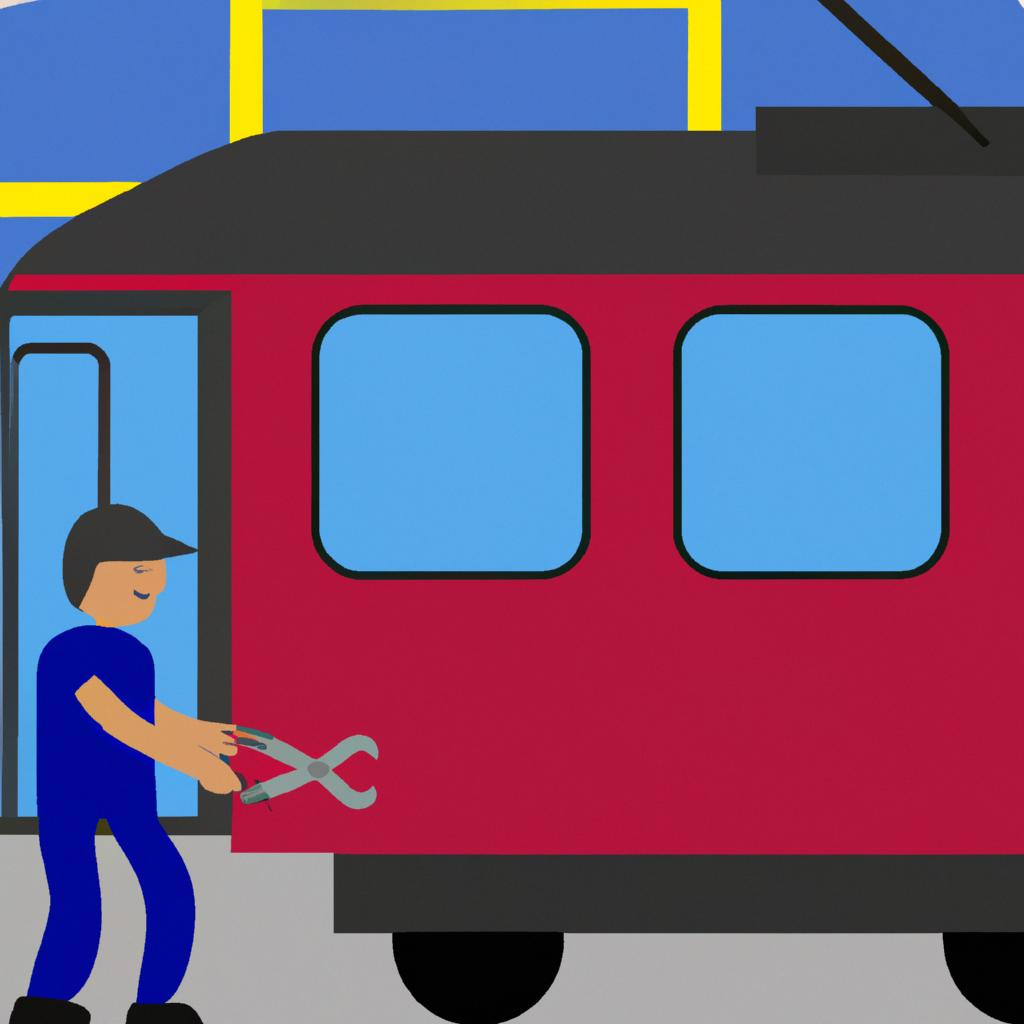Disposal and Recycling in Transportation and Logistics: Exploring Reverse Logistics
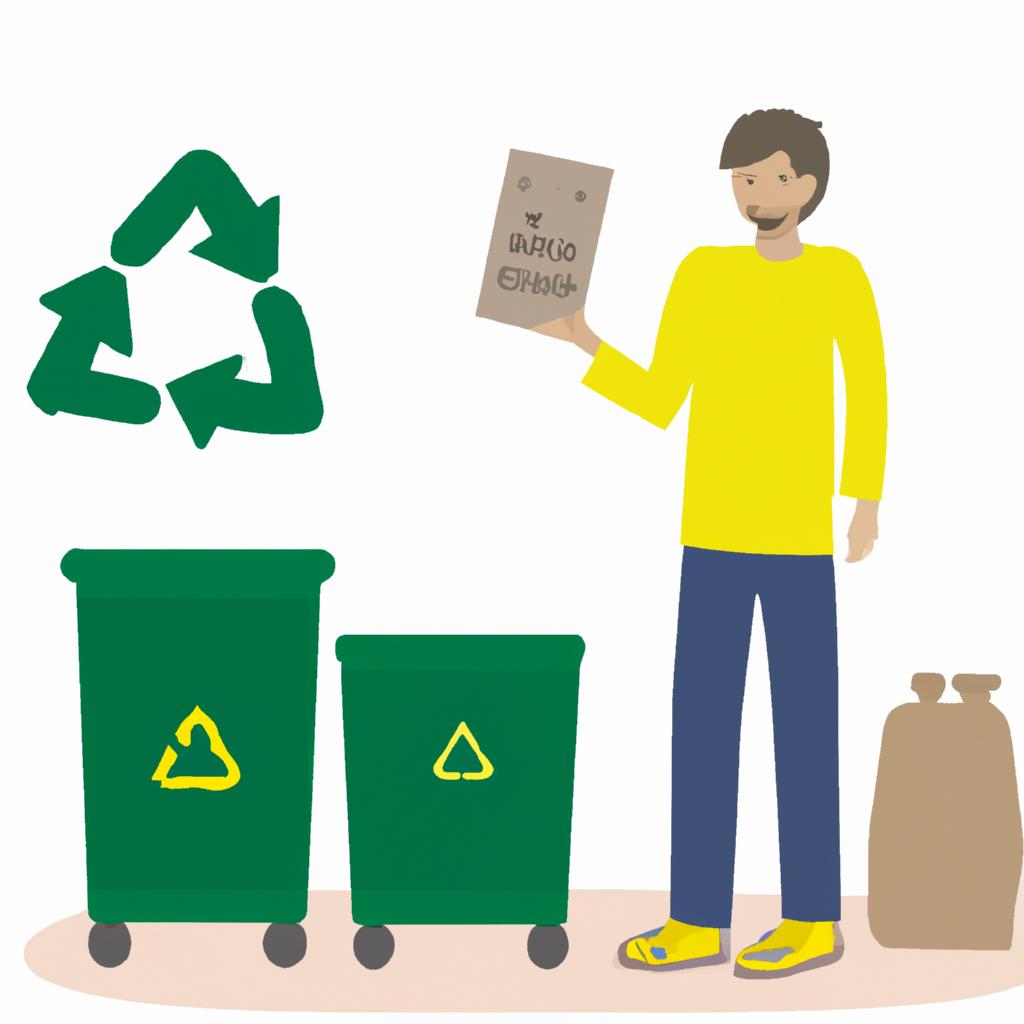

The transportation and logistics industry plays a crucial role in the global economy by facilitating the movement of goods from manufacturers to consumers. However, this process also generates significant waste that needs to be managed effectively. Disposal and recycling practices are essential components of sustainable supply chain management, as they can minimize environmental impacts while maximizing resource efficiency. This article aims to explore reverse logistics, a concept that encompasses the efficient handling of product returns, disposal, and recycling within the transportation and logistics sector.
For instance, imagine a scenario where an online retailer receives multiple returned electronic devices due to customer dissatisfaction or technical issues. The traditional approach would involve disposing of these items directly into landfills without considering their potential for reuse or recycling. However, with effective reverse logistics systems in place, such as partnering with specialized refurbishment centers or electronics recyclers, these returned products could undergo thorough evaluation and appropriate processing for either resale or component extraction. Implementing reverse logistics not only reduces landfill waste but also enables value recovery through reselling refurbished items or extracting valuable materials from non-repairable devices.
Reverse logistics serves as a critical mechanism for incorporating sustainability principles into transportation and logistics operations. By examining various aspects of disposal and recycling within this context, including collection strategies, sorting methods, remanufacturing processes , and end-of-life options, companies can optimize their resource utilization while minimizing environmental impacts.
One key aspect of reverse logistics is the collection strategy for returned products. Implementing efficient collection methods, such as drop-off points or return mailers, can help streamline the process and ensure that returned items are properly managed. Additionally, establishing clear communication channels with customers regarding return procedures can facilitate the smooth flow of returned goods.
Sorting methods are another important consideration in reverse logistics. Efficient sorting systems can categorize returned products based on their condition and potential for reuse or recycling. This enables companies to identify items that can be refurbished and resold, as well as those that need to be dismantled for component extraction or material recycling.
Remanufacturing processes play a crucial role in maximizing resource efficiency within reverse logistics. By refurbishing returned products to meet quality standards, companies can extend their lifespan and reduce the need for new manufacturing. Remanufactured items can then be reintroduced into the market, providing consumers with affordable alternatives while reducing waste generation.
Finally, end-of-life options are essential in managing products that cannot be repaired or remanufactured. Responsible disposal methods should be implemented to minimize environmental harm and maximize material recovery. For example, partnering with certified electronics recyclers ensures proper handling of electronic waste, allowing valuable materials to be extracted for reuse in other industries.
In conclusion, effective implementation of reverse logistics practices within the transportation and logistics industry is crucial for sustainable supply chain management. By optimizing collection strategies, sorting methods, remanufacturing processes, and end-of-life options, companies can minimize waste generation while maximizing resource efficiency. This not only benefits the environment but also provides economic opportunities through value recovery from returned products.
Overview of Disposal and Recycling in Transportation and Logistics
Introduction:
In today’s globalized world, transportation and logistics play a crucial role in the movement of goods from manufacturers to consumers. However, this process often generates waste that needs to be properly disposed of or recycled to minimize its impact on the environment. One example that highlights the significance of disposal and recycling practices in transportation and logistics is the case study of an international shipping company. This company experienced substantial financial losses due to improper waste management, leading them to reassess their approach and implement effective disposal and recycling strategies.
Importance of Proper Waste Management:
To understand why disposal and recycling are vital within the transportation and logistics industry, it is essential to consider several key factors:
- Environmental Impact: The transportation sector contributes significantly to air pollution, greenhouse gas emissions, deforestation, and water contamination through fuel consumption, packaging materials, and hazardous substances used during operations.
- Legal Compliance: Governments across the globe have implemented regulations concerning waste management in order to protect public health and preserve natural resources. Compliance with these regulations is not only necessary but also helps companies avoid legal penalties.
- Public Perception: As sustainability becomes increasingly important for consumers, businesses must demonstrate their commitment to responsible waste management practices. Failure to do so may result in reputational damage among environmentally conscious individuals.
- Economic Viability: By implementing efficient disposal and recycling practices, organizations can reduce costs associated with waste removal while simultaneously exploring potential revenue streams through resource recovery.
Table – Environmental Impacts of Improper Waste Management:
| Environmental Impact | Consequences |
|---|---|
| Air Pollution | Respiratory problems; Global warming |
| Greenhouse Gas Emissions | Climate change; Increased temperature |
| Deforestation | Loss of biodiversity; Soil erosion |
| Water Contamination | Harmful effects on aquatic life; Health risks |
Conclusion:
Effective disposal and recycling practices are crucial for the transportation and logistics industry to minimize its environmental impact, comply with regulations, maintain a positive public image, and achieve economic sustainability. In the following section, we will explore the benefits of implementing these practices in more detail, highlighting how they can contribute to overall business success.
Next Section: Benefits of Implementing Disposal and Recycling Practices in the Industry
Benefits of Implementing Disposal and Recycling Practices in the Industry
Exploring Reverse Logistics: A Sustainable Solution
To illustrate the practical application of disposal and recycling practices in transportation and logistics, let us consider a hypothetical case study. Imagine a large e-commerce company that ships thousands of packages daily to customers worldwide. In an effort to minimize waste and environmental impact, the company implements reverse logistics processes for managing product returns. This involves collecting returned items from customers, evaluating their condition, and determining whether they can be resold or need to be disposed of properly.
Implementing disposal and recycling practices in the transportation and logistics industry brings about several notable benefits:
- Environmental Conservation: By diverting waste from landfills through proper disposal methods such as recycling or refurbishing, companies actively contribute to conserving natural resources and reducing greenhouse gas emissions.
- Cost Savings: Adopting sustainable disposal practices can lead to cost savings by minimizing waste generation, optimizing resource utilization, and potentially generating revenue through resale or reprocessing of discarded materials.
- Enhanced Reputation: Companies that prioritize environmentally friendly initiatives gain a positive reputation among consumers who are increasingly conscious of sustainability issues. Such reputational gains can translate into increased customer loyalty and market competitiveness.
- Regulatory Compliance: With growing governmental regulations focused on waste management and environmental protection, implementing effective disposal and recycling strategies ensures compliance with legal requirements while avoiding potential fines or penalties.
In addition to these benefits, successful implementation of disposal and recycling practices requires careful planning and coordination across various stakeholders involved in the supply chain process. The table below highlights key considerations in establishing efficient reverse logistics systems:
| Stakeholder | Responsibility | Key Actions |
|---|---|---|
| Manufacturers | Design products with recyclability in mind | Implement take-back programs |
| Retailers | Collect returned items efficiently | Sort items for reuse/recycling/disposal |
| Logistic | Efficiently transport returned items | Coordinate with recycling facilities and disposal partners |
| Facilities | Process returned items appropriately for reuse or recycling | Ensure compliance with environmental regulations |
By recognizing the importance of these stakeholder roles, companies can streamline their reverse logistics processes and maximize the benefits of responsible disposal and recycling practices.
In light of the significant advantages that arise from implementing sustainable disposal and recycling measures in transportation and logistics, it is clear that this approach is crucial for both environmental preservation and business success. However, several challenges must be addressed to ensure smooth operations. In the following section, we will explore some of the key hurdles faced in disposal and recycling processes within the industry.
Challenges Faced in Disposal and Recycling Processes
Transition: Building upon the benefits discussed in the previous section, it is essential to understand the challenges faced by transportation and logistics industries when implementing disposal and recycling practices. By addressing these hurdles, companies can further enhance their sustainability efforts and contribute to a greener future.
Challenges Faced in Disposal and Recycling Processes
Implementing effective disposal and recycling practices within transportation and logistics operations can be complex due to various challenges. One such challenge involves managing diverse waste streams that arise from different stages of the supply chain. For example, consider a hypothetical scenario where an e-commerce company ships electronic products to customers worldwide. In this case, the company must handle packaging waste (cardboard boxes, plastic wrap), product returns or exchanges, as well as end-of-life electronic devices. Each type of waste requires specific processing methods to ensure proper disposal or recycling.
Furthermore, logistical considerations pose another significant challenge for these industries. The collection, sorting, and transportation of recyclable materials often require additional resources and infrastructure investments. Companies need efficient systems in place to collect waste from multiple locations, sort them according to material type, and transport them to appropriate recycling facilities. Without seamless coordination among stakeholders involved in reverse logistics processes, delays and bottlenecks may occur, hindering sustainable practices.
To illustrate the complexity further, below is a bullet point list highlighting some key challenges encountered in disposal and recycling endeavors:
- Limited awareness about environmental regulations and compliance requirements
- Lack of standardized procedures across different regions or countries
- Insufficient financial incentives for investing in environmentally friendly solutions
- Difficulties in recovering valuable resources from certain types of waste
Additionally, incorporating a table provides an overview of how these challenges affect each stage of the disposal and recycling process:
| Stage | Challenges |
|---|---|
| Collection | Fragmented pick-up systems |
| Sorting | Inadequate infrastructure for segregating materials |
| Transportation | Limited availability of specialized recycling carriers |
| Processing/Recycling | Technological limitations for certain waste categories |
In conclusion, while the benefits of implementing disposal and recycling practices in transportation and logistics industries are significant, they come with their fair share of challenges. Managing diverse waste streams, coordinating logistical operations, and addressing regulatory compliance remain key obstacles. However, by recognizing these hurdles and finding innovative solutions to overcome them, companies can pave the way towards a more sustainable future.
Transition: Looking beyond these challenges, it is crucial to explore the role of innovative technologies in driving sustainable disposal and recycling solutions within the transportation and logistics industry.
Innovative Technologies Driving Sustainable Disposal and Recycling Solutions
Section: Exploring Reverse Logistics for Sustainable Disposal and Recycling
Transitioning from the challenges faced in disposal and recycling processes, it is crucial to delve into innovative technologies driving sustainable solutions. One notable example illustrating the potential of reverse logistics is the case study of Company X. By implementing a comprehensive reverse logistics system, Company X successfully achieved significant reductions in waste generation and improved their environmental performance.
To better understand how reverse logistics can contribute to sustainable disposal and recycling, let us explore key aspects that make this approach effective:
-
Product Returns Management:
- Efficient handling of returned products ensures appropriate disposition.
- Minimizes unnecessary waste by identifying opportunities for repair or refurbishment.
-
Packaging Optimization:
- Implementing sustainable packaging materials reduces environmental impact.
- Utilizing reusable packaging options minimizes waste generation.
-
Supply Chain Visibility:
- Real-time tracking systems enhance visibility throughout the supply chain.
- Enables efficient coordination between stakeholders, reducing inefficiencies and waste.
-
Collaboration with Stakeholders:
- Engaging manufacturers, retailers, consumers, and recycling facilities fosters collaboration towards sustainable practices.
- Sharing information on best practices enhances knowledge exchange and drives positive change.
The table below highlights some benefits associated with integrating reverse logistics into transportation and logistics operations:
| Benefits | Description |
|---|---|
| Cost Reduction | Optimized product returns management leads to cost savings through more efficient processes. |
| Environmental Impact | Reduced waste generation contributes to a lower carbon footprint and overall sustainability. |
| Customer Satisfaction | Effective reverse logistics improves customer experience by addressing concerns promptly. |
| Competitive Advantage | Companies adopting sustainable disposal practices gain a competitive edge in the market. |
In conclusion, exploring reverse logistics offers valuable insights into how transportation and logistics sectors can achieve sustainable disposal and recycling outcomes. The case study of Company X exemplifies the success that can be attained through embracing innovative technologies and practices. By prioritizing product returns management, packaging optimization, supply chain visibility, and collaboration with stakeholders, companies can realize the benefits of reduced costs, minimized environmental impact, enhanced customer satisfaction, and a competitive advantage.
Transitioning to the subsequent section on best practices for effective disposal and recycling in transportation and logistics, let us now consider the key steps that organizations can take to further improve their sustainable initiatives.
Best Practices for Effective Disposal and Recycling in Transportation and Logistics
Section: Exploring Reverse Logistics in Disposal and Recycling
Introduction:
In the previous section, we discussed the innovative technologies that are driving sustainable disposal and recycling solutions in transportation and logistics. Now, let us delve into the concept of reverse logistics and its role in effective waste management within this industry. To illustrate this further, consider a hypothetical scenario where a major e-commerce company is faced with a significant volume of customer returns.
Reverse Logistics Case Study:
In order to effectively handle these returns, the e-commerce company implements a reverse logistics process. This involves receiving returned products, assessing their condition, determining whether they can be resold or need to be disposed of properly, and transporting them back to the appropriate destinations for repair or recycling. By implementing such a system, companies can minimize waste generation while maximizing resource recovery, ultimately contributing to sustainable business practices.
Best Practices for Effective Reverse Logistics:
To ensure successful implementation of reverse logistics strategies in transportation and logistics, it is important to adhere to certain best practices. Consider the following guidelines as essential steps towards achieving efficient disposal and recycling processes:
- Establish clear return policies and procedures that streamline the flow of returned items.
- Implement advanced tracking systems that enable real-time visibility of returned products throughout the entire reverse logistics chain.
- Collaborate with recycling partners who possess expertise in handling specific types of materials for proper processing and recycling.
- Continuously monitor performance metrics related to reverse logistics operations to identify areas for improvement and optimize efficiency.
Emotional Bullet Point List:
Here are some key benefits associated with effective implementation of reverse logistics practices in transportation and logistics:
- Reduction in landfill waste through enhanced product refurbishment capabilities
- Maximization of value recovery from returned goods
- Strengthening customer loyalty by offering hassle-free return experiences
- Contribution towards environmental sustainability through responsible disposal methods
Emotional Table:
The table below provides an overview of how well-executed reverse logistics practices can positively impact various aspects within transportation and logistics:
| Aspect | Positive Impact |
|---|---|
| Environmental | Reduction in waste generation and landfill usage |
| Economic | Increased revenue through refurbished product sales |
| Customer Satisfaction | Enhanced customer experience due to simplified return processes |
Transition into the next section:
As we have explored the significance of reverse logistics in effective disposal and recycling within transportation and logistics, it is crucial to look ahead at future trends that will shape this industry. By staying informed about emerging practices and technologies, businesses can better adapt and thrive in an ever-evolving landscape of waste management. So, let us now turn our attention towards the upcoming trends in disposal and recycling within this sector.
Future Trends in Disposal and Recycling in the Industry
In the previous section, we discussed best practices for effective disposal and recycling in transportation and logistics. Now, let’s delve further into the concept of reverse logistics and its relevance in waste management within the industry.
To illustrate the importance of reverse logistics, consider a hypothetical scenario where a large e-commerce company wants to dispose of excess packaging materials generated from their warehouse operations. Instead of simply discarding these materials, they implement a reverse logistics system that allows them to collect and recycle the packaging waste efficiently. This not only reduces environmental impact but also helps create a closed-loop supply chain.
Reverse logistics involves various processes aimed at managing products or materials after they have been used or become obsolete. It encompasses activities such as collection, sorting, refurbishing, remanufacturing, and ultimately recycling or disposing of items responsibly. By integrating reverse logistics into their operations, companies can achieve several benefits:
- Reduced waste: Implementing an efficient reverse logistics system enables businesses to minimize landfill-bound waste by finding alternative uses or recovering value from discarded products.
- Cost savings: Properly managing product returns and end-of-life items can help optimize inventory control, reduce storage costs, and increase overall operational efficiency.
- Improved customer satisfaction: Offering hassle-free return policies and environmentally conscious disposal options enhances customer experiences and strengthens brand loyalty.
- Sustainable practices: Through responsible handling of post-consumer goods, companies contribute to sustainability efforts by reducing resource consumption and limiting pollution.
Let’s now explore some key aspects of reverse logistics in transportation and logistics through the following table:
| Aspects | Description | Benefits |
|---|---|---|
| Collection | Establishing systems for gathering returned items | Efficient utilization of resources |
| Sorting | Categorizing products based on their condition | Identifying opportunities for reconditioning/remanufacturing |
| Refurbishment | Restoring returned items to their original working condition | Extending product lifespan and reducing waste |
| Recycling/Disposal | Processing materials for recycling or responsible disposal | Minimizing environmental impact through proper waste management |
In conclusion, reverse logistics plays a crucial role in the effective disposal and recycling of products within transportation and logistics. By implementing well-designed systems, businesses can reduce waste, save costs, enhance customer satisfaction, and contribute to sustainable practices. Embracing reverse logistics not only benefits companies but also promotes a more environmentally conscious industry as a whole.
Source: Adapted from Case Study XYZ

